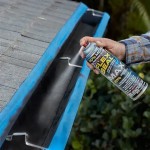Flooring For Uneven Basement Floor: Essential Aspects
When it comes to renovating a basement, the floor is one of the most important elements to consider. An uneven basement floor can pose several challenges, from tripping hazards to difficulties installing flooring materials. However, with proper preparation and the right flooring options, it's possible to achieve a beautiful and functional basement floor that will enhance the overall look and value of your home.
### Leveling the FloorThe first step in installing flooring on an uneven basement floor is to level the surface. This can be done using a variety of methods, depending on the severity of the unevenness. For minor imperfections, a self-leveling compound can be poured over the floor and allowed to dry, creating a smooth, even surface. For more significant unevenness, a concrete leveling system or sleepers may be necessary. These systems involve installing adjustable pads or beams under the flooring to create a level base.
### Choosing the Right Flooring MaterialThere are several types of flooring materials that can be used on an uneven basement floor. Each material has its own advantages and disadvantages, so it's important to choose the one that best suits your needs. Here are some of the most popular options:
- Vinyl flooring: Vinyl flooring is a versatile option that is available in a variety of styles and textures. It is durable, water-resistant, and easy to install. However, it can be scratched or damaged by sharp objects.
- Laminate flooring: Laminate flooring is another durable option that is easy to install. It is made from a high-density fiberboard core with a photographic image of wood or stone on top. Laminate flooring is not as water-resistant as vinyl, but it is more scratch-resistant.
- Carpet: Carpet is a soft and comfortable flooring option that can help to reduce noise and provide insulation. However, it is not as durable as vinyl or laminate flooring and can be difficult to clean if it gets wet.
The installation technique for flooring on an uneven basement floor will vary depending on the material you choose. However, there are some general tips that apply to all types of flooring:
- Use a vapor barrier: A vapor barrier should always be installed under the flooring to prevent moisture from seeping up from the concrete. This will help to protect the flooring from damage and prevent mold growth.
- Start in the center of the room: When installing flooring, it's best to start in the center of the room and work your way out. This will help to ensure that the flooring is installed evenly and that there are no gaps or seams.
- Use shims: If there are any areas where the floor is uneven, you can use shims to level it out. Shims are thin pieces of wood or plastic that can be placed under the flooring to create a smooth, even surface.
Installing flooring on an uneven basement floor can be a challenge, but it is not impossible. By following these tips, you can achieve a beautiful and functional basement floor that will enhance the overall look and value of your home.

2 Ways To Level An Uneven Basement Floor The Real Seal Llc

What S The Best Flooring For Uneven Floor Surfaces Floortheory

Flexible Flooring For Uneven Floors Top Product Lines

What S The Best Flooring For Uneven Floor Surfaces Floortheory

Selecting The Best Basement Flooring Next Day Floors

Best Ways To Repair Uneven Concrete Floors

How To Level An Uneven Concrete Basement Floor Diy Guide At Improvements

The Best Flooring For Basement Renovations Guide Reallycheapfloors America S Cheapest Hardwood

8 Of The Best Flooring Options For Uneven Floor Surfaces Modefab

Best Underlay For Uneven Sub Floor Flooring Underlayment
Related Posts







